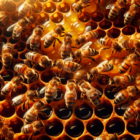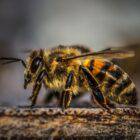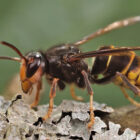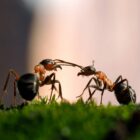How do bees exchange informations?
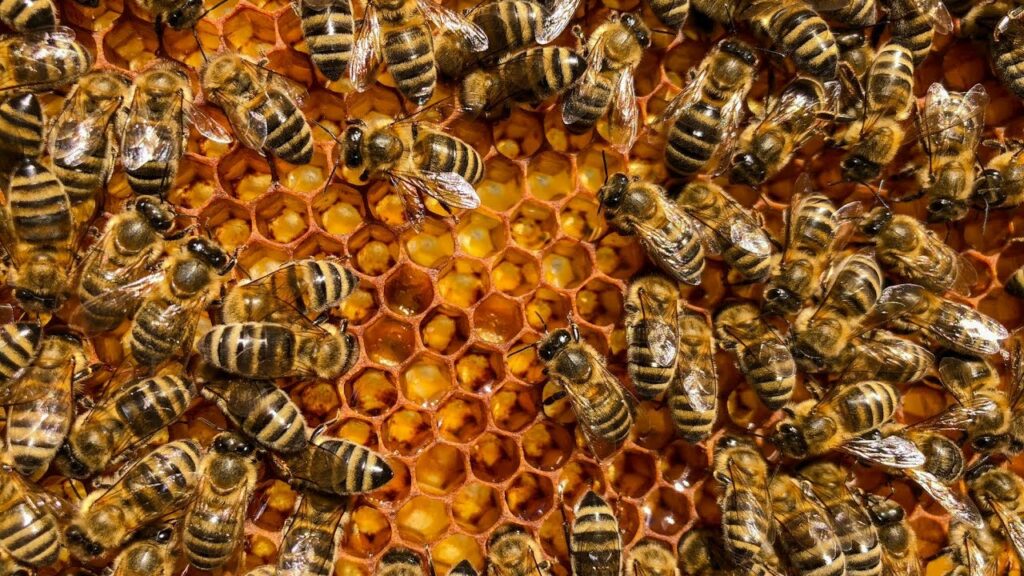
Bees have remarkable ability to communicate vital information within their colonies. The unique form of bees communication, often referred to as the “waggle dance,” reveals a sophisticated means of sharing essential details about food sources, locations, and more.
Bees, particularly honeybees (Apis mellifera), exhibit complex social behaviors within their colonies. The hive functions as a highly organized society with various roles, where information sharing plays a pivotal role in their survival and success.
The Waggle Dance: Sharing Nectar Locations
This unique dance involves intricate movements and precise patterns that convey detailed instructions regarding the location, distance, and quality of nectar or pollen-rich foraging sites to their fellow hive members.
The forager bees, upon discovering a lucrative food source, return to the hive bursting with excitement to share their findings. The waggle dance, performed on the vertical honeycomb, is a mesmerizing and intricate series of movements.
To convey the location of the food source, the dancer waggles its abdomen while moving in a figure-eight pattern. The straight-line component of the dance indicates the direction of the food source concerning the position of the sun; the duration and intensity of the waggle portion signal the distance.
The angle of the dance concerning the vertical position of the honeycomb communicates the direction of the nectar source in relation to the sun. A waggle dance performed vertically upwards indicates the food source is directly towards the sun. A dance oriented at a particular angle indicates the source is located in that direction concerning the sun’s azimuth.
This waggle dance serves as a precise and effective means of communication, providing the information required for other worker bees to locate the specific food source mentioned.
The remarkable precision and complexity of the waggle dance enable bees not only to convey the location of food sources but also to communicate other essential details. The bees are able to distinguish between the profitability and quality of various foraging sites, adjusting their communication by altering the duration, speed, and vigor of their dance to indicate the desirability of the food source they found.
Studies and Scientific Observations
Renowned ethologist Karl von Frisch conducted extensive research on bee communication, particularly the waggle dance. His groundbreaking work, which earned him a Nobel Prize, revealed the complex nature of this communication system.
The German ethologist’s groundbreaking studies, notably published in his book “The Dance Language and Orientation of Bees“, were foundational in decoding the complex language of the honeybee dance. Von Frisch decoded the meaning of the waggle dance, illustrating its role in guiding other bees to food sources.
In his experiments, von Frisch meticulously observed bees returning to the hive after foraging. Through careful analyses of their movements, he deciphered the meaning behind the waggle dance. By studying the direction, duration, and intensity of the waggle phase and combining these elements with the position of the sun in relation to the hive, von Frisch determined that bees used this dance to communicate the location of nectar sources.
One of the most significant demonstrations of von Frisch’s research involved presenting bees with an artificial feeding site and observing how they communicated its location to the hive.
Through manipulations of the site’s location and direction, von Frisch noted how bees adjusted their waggle dance to accurately indicate the altered direction and distance, thus confirming their ability to communicate specific locations.
Environmental Factors
Von Frisch’s work revealed that bees can modify their communication dance based on environmental factors, such as the changing position of the sun.
This adaptive behavior highlights the bees’ ability to factor in variations in their surroundings to accurately convey the information about food sources to other members of the colony.
Von Frisch’s research on the waggle dance was not only groundbreaking but also paved the way for further studies that expanded our understanding of bee communication. Other researchers, such as Nobel laureate Dr. Adrian Wenner and Dr. Martin Lindauer, built upon von Frisch’s work, uncovering more details about the intricacies and adaptability of the waggle dance.
Modern technologies and advancements in observational techniques have allowed researchers to delve deeper into the nuances of bee communication. High-speed cameras and advanced tracking methods have provided more detailed insights into the movements and signals conveyed through the waggle dance, shedding light on the subtleties of communication that might have previously gone unnoticed.
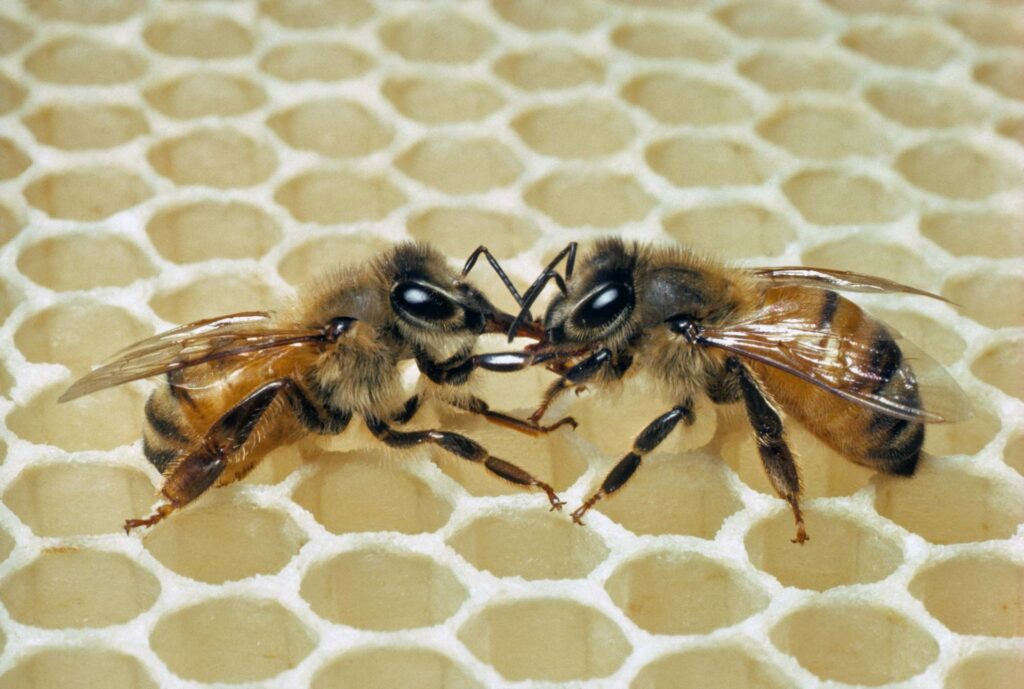
Additional Communication Methods in Bees
Bees employ various communication methods beyond the renowned waggle dance to effectively exchange crucial information within their hive and coordinate their activities. These additional communication strategies further highlight the intricate social interactions and collective decision-making processes among these remarkable insects.
Trophallaxis
Trophallaxis, a central form of communication and cooperation among bees, involves the exchange of food and information through mouth-to-mouth feeding. This behavior serves multiple purposes within the hive. When forager bees return with nectar or pollen, they share their findings through trophallaxis, transferring food from their honey stomach to other workers, thereby providing information about the quality and type of food available in the environment.
Moreover, trophallaxis plays a vital role in spreading information about the needs of the colony. Workers distribute stored food, such as honey and royal jelly, among other bees, transmitting essential nutrients and signals about the hive’s requirements. This exchange of substances allows for the dissemination of information not just about food sources but also about the overall health and needs of the colony.
Pheromone Communication
Pheromones, chemical signals emitted by bees, serve as a fundamental mode of communication within the hive. Bees release a variety of pheromones that convey specific messages to other colony members. For instance, the queen bee emits pheromones that maintain the social order within the hive, signaling her presence and fertility, which is crucial for the unity and stability of the colony.
Additionally, pheromones regulate and coordinate various activities in the hive. For instance, alarm pheromones are released in response to threats or danger, signaling other bees to prepare for defense and protection. Orientation pheromones help bees navigate and find their way back to the hive, contributing to their foraging and scouting activities.
Vibrational Signals
Bees also communicate through vibrational signals, which involve producing and sensing vibrations in the hive structure. These vibrations are used for a variety of purposes, such as signaling the need for more workers to contribute to specific tasks like brood care or food storage. Vibrational signals are also utilized by worker bees to indicate the presence of the queen or to coordinate swarming behavior, signaling the colony’s intent to divide and establish a new hive.
Collective Decision-Making
Bees display a remarkable ability for collective decision-making, which is vital for the survival and prosperity of the colony. When faced with significant decisions such as finding a new nest site or determining the best foraging locations, bees engage in a complex social process that involves communication and information sharing.
The Swarming Process
Swarming, the process by which a new colony is formed, necessitates a decision-making process among the bees. As the colony expands or when a queen leaves with a group of worker bees to establish a new hive, scout bees search for potential nest sites. These scouts then return to the hive and convey their findings through the waggle dance.
Evaluating and Consensus Building
Upon witnessing the dances of multiple scout bees advertising different sites, other worker bees observe and evaluate these dances. This observation process is crucial for bees to reach a collective decision about the best potential site. The information conveyed through the dances assists bees in reaching a consensus on the most suitable location.
Democratic Decision-Making
The decision-making process in bees has been likened to a form of democracy, where the bees engage in a kind of voting mechanism through their dance communication.
Multiple bees perform dances for different sites, and the site that elicits the most dance performances or generates the most interest among the observers is typically the one selected by the colony as the new location.
Swarm Departure
Once a consensus is reached, the colony prepares for departure to the selected site. The bees that have agreed upon the chosen location then communicate this decision to the entire colony, initiating the swarming process as they collectively depart for the new site, guided by the location information provided through the dance language.
Implications and Ongoing Research
The communication methods of bees are not only fascinating but also hold significant implications for understanding collective decision-making and information sharing in social organisms. Ongoing research continues to explore the depth and intricacies of bee communication, shedding more light on their remarkable social behavior and cognitive abilities.
The sophisticated communication methods of bees, notably the waggle dance, stand as a testament to their remarkable intelligence and social organization. Their ability to convey precise information about food sources, locations, and collective decision-making processes within the hive showcases the intricate and evolved nature of their communication systems.

